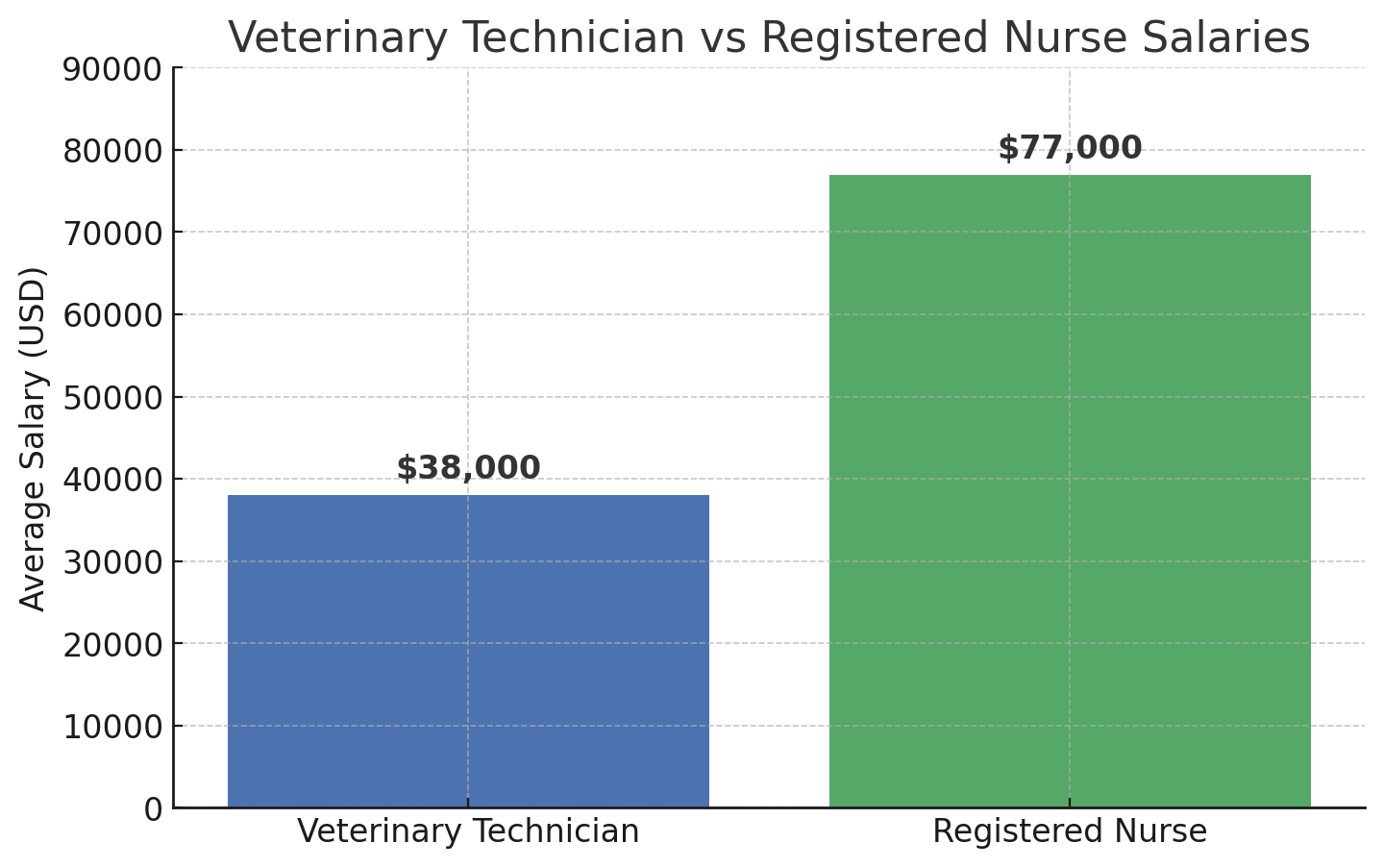
sen·tient /ˈsen(t)SH(ē)ənt/ adjective 1. able to perceive or feel things.
I recently presented at the Institute of Critical Animal Studies (ICAS) conference on “Recognizing Non-Human Animals as Sentient Beings”. I
Weeknights 7PM - Midnight
Weekends 8AM - Midnight

Why The Veterinary Technician is So Important and Why You Need to Know!
“…most veterinarians will tell you that a trusted technician is worth their weight in gold. “ Dr. Ken Fisher, DVM
By Dr. Ken Fisher, Dr. Caroline Simard-Swimmer and Howard Swimmer
KF: Although there have been recent reports of the US labor market cooling, most veterinary practices continue to experience labor shortages, particularly of technicians. The demand for veterinary services has been slow to wane, and the same goes for the residual stress on staff. In an article from the AVMA News website in February 2023, Ashli Selke, past president of the National Association of Veterinary Technicians in America (NAVTA) asserted that during the pandemic, the veterinary technician work force “lost a lot of people due to overworking and burnout”. A national survey of veterinary technicians in 2022 found that, “when asked about the most challenging aspects of their jobs, 39% of respondents said low salary, [and] 16% said high staff turnover or difficulty retaining staff…” In an effort to retain employees, most veterinary practices raised staff wages. An article posted on the AVMA website in November 2023* found that most veterinary practices reported raising staff wages 4-6% on average. But that doesn’t seem to have been enough. In 2023 the US Bureau of Labor statistics reported that the mean hourly wage of veterinary technicians in the state of Pennsylvania was just over $21/hr. The website Salary.com currently reports that the mean hourly wage of veterinary technicians in Pittsburgh is $19.13. The latter tracks well with my practice.
PAD: If there’s one thing about your job that you could change, what would it be.
MW: The pay.
JH: I don’t think the field could actually fairly compensate us for everything we do. Human nurses are not radiologists and anesthesiologists, getting patient histories… I can’t imagine a human nurse that does all the things that we do, being compensated like we are. I think that’s there’s this perception that you run into again and again from people “ it wouldn’t cost this much at my doctors to do this” Actually, it would cost three times as much. You have health insurance subsidy, government subsidy, etc. I don’t think the average person has a real idea of what healthcare costs.
MW:The whole industry is underpaid in comparison to human medicine and it’s really frustrating sometimes because we do a lot. We have to have knowledge of multiple species. In human medicine you have your phlebotomists, nurses that just work on a hospital floor or an office setting. Then you have your X-ray technicians, and so on. Whereas we are all of those positions in one!
So there it is, out in open for everyone to see. The amount of knowledge required to be a veterinary technician is vast. And for Melissa and Jeanne, they both made unsolicited comparisons to human nurses. This gets right at the core of our discussion.
KF: In the February 2023 article on the AVMA News website*, Kelly Foltz, a credentialed veterinary technician and chair of the AVMA Committee on Veterinary Technician Education and Activities, argued that “current [technician] salaries are still not adequate for the knowledge and expertise that credentialed veterinary technicians provide”, and that, while recent increases in wages are “a step in the right direction, it’s still very sobering. I would love to see the vast majority to be in the $30-$35 an hour range and beyond.” My most experienced technician, who has worked as a veterinary technician for over 20 years and whose wage is about $24/hr, believes that the only way to solve the labor shortage is to pay vet techs on a scale similar to nurses in human medicine.
MW: We all feel that way in this industry. We work really hard and do a lot of things and it can be really frustrating to see your counterparts in human medicine getting paid more.
Becoming a CVT (Certified Veterinary Technician) is one way to improve your chances of getting a higher wage. But that takes time and costs a lot of money, between $8,000-$30,000. And even after that, there is no guarantee you will make enough money to fulfill your financial obligations. This is a tricky spot.
JH: I have certainly wanted to go to school for a long, long time, but it is an expensive option and the reason I’m able to do it now is because [my employer] is paying for it.
KF: The key word in Foltz’ comment is “credentialed”, and this is a very difficult topic to discuss and address. In my opinion, the current state of veterinary technician credential education is mediocre at best. In my local experience, just because a technician has a credential does not mean that I can trust their knowledge and skills. Most of the new grads coming out of our local tech programs need a significant amount of on-the-job training (months to years) to get to a point where I can trust them with the lives of my patients.
MW: You don’t get a ton of experience in school because you’re limited on your patients. At VTI (Vet Tech Institute) it’s strictly rescue pets who just need a spay and a neuter, sometimes a dental cleaning. But you’re with 60 plus students. So in the timeframe of having 20 pets over a six month period, you don’t really get a lot of experience. So I think our clinical experience is very limited.
And Dr. Fisher stated this to a tee.
KF: On the other hand, most veterinarians will tell you that a trusted technician is worth their weight in gold. I consider myself lucky to have in my employ many of these trusted technicians. When I was in vet school I came across some technicians whose skills I could never attain. The issue is that there seems to be a very wide range in the quality of credentialing programs. The 2022 NAVTA survey revealed that a large majority of credentialed technicians believe that it would be beneficial to have a national standardized credentialing requirement. I agree. If we are going to solve the labor shortage and attract people to the profession with higher salaries commensurate with their knowledge and expertise, a more centralized system of curriculum development and assessment will need to be implemented. It would also likely lead to a formal change in job titles. Those without a credential would have the title “veterinary assistant” and earn wages similar to current wages; and those with a credential would have the title “veterinary nurse” and earn higher wages. NAVTA’s Veterinary Nurse Initiative has been working towards this title change since 2016, but progress has been slow.
Last week we shared our support for the official job title change to Veterinary Nurse for vet techs. It’s fitting and well deserved. Adopting standardization for credential programs will definitely be a great step in an effort to reduce vet tech shortages. Moving through this change must be cautious and deliberate. But there are some that have wanted to take this a step further. In our November 14th , 2024 newsletter we weighed in on Prop 129, an initiative that passed in Colorado creating a new position in the veterinary medicine field.
In November we said this:
“We do not support Proposition 129. We place a very high value on our veterinary technicians. Their training allows them to effectively support veterinarians conducting procedures that take years to learn in the classroom and the clinic. They are the support team to make sure the doctors have what they need to efficiently and safely get through the procedure and send the pets home to recover with the least amount of risk. Surgery and some of the other proposed VPA allowable procedures are complicated. They require years of experience to get competent, let alone really good. We do not believe that two semesters in the clinic is enough to master any skill that could potentially put pets at risk. That is how we believe veterinary medicine should be practiced. And while we are by no means averse to progress in the field, quite the contrary, we find this to be a very risky proposition, literally.”
We discussed this proposition with Melissa and Jeanne, where a strategy to have more people that can do spays, neuters and surgeries for a lot less money because they have a 2 year program. All in the name of profit.
JH: I understand the motivation: the desire to have more veterinary care accessible. It just seems that it could put people, who may not be as experienced as they need to be, in positions of performing things that really just veterinarians should be doing- in the name of creating more accessible health care.
MW: I worry. I think the idea is great to have that extra level. I could go from being a CVT to a PA. But I think it requires enough schooling and enough clinical experience for you to be able to be that person. Just pushing people through a two year program, who have never had clinical experience, never went to technician school, to begin with, would be devastating to the field overall.
Speaking to these experienced vet techs has been very illuminating. They are committed to their work and their patients. Dr. Fisher touched on the profit model when referring to standardization on credentialed programs. He said this:
KF: This is not an easy task and carries increased financial burden for both individuals and institutions. Personally, I think it’s incumbent upon schools of veterinary medicine to get involved with technician education. They already have the infrastructure in place i.e. faculty, administration, facilities. This doesn’t solve the financial piece, but it would be a step in the right direction.
Another piece of the puzzle that may warrant further investigation is the way in which profitability is defined in veterinary practice. Simmons, a national leader in veterinary practice sales and appraisals, states that “total support (non-veterinary) staff expense in a financially healthy animal hospital (including benefit cost) is typically kept below 23-25% of total revenue”, with 16-19% going towards wages and 5-8% towards benefits. This is a widely accepted standard. Perhaps this standard needs to be altered to reflect the current labor shortage. How can we quantify the affects of low wages, burnout and staff turnover on the financial health of a business? It would seem apparent to me that raising the standard percentage of revenue that goes towards support staff wages could stabilize staff turnover, leading to less burnout and improved morale in the workplace. It may decrease the bottom line a bit, but could have worthwhile long-term term benefits. Just a thought.
In our discussions, it is clear, vet techs rule! Access to care is important but profit should never be the driving force. We learned that clients tell vet techs one thing and doctors something else. Sometimes clients are rude. But keep in mind, vet techs are the first and oftentimes, last step in ushering your pets to good health. We depend on them. Let’s respect them !
*Veterinary Technicians being paid more but still face concerns about wages, burnout, debt.
By Coco Lederhouse February 14, 2023

I recently presented at the Institute of Critical Animal Studies (ICAS) conference on “Recognizing Non-Human Animals as Sentient Beings”. I

Every year around this time pet owners are warned about toxic foods and holiday hazards. And while it’s important to

Life on the Inside: How to Keep Indoor Cats Happy (and Out of Trouble) There’s something fascinating about how differently
Pets After Dark is a subscription-based service that provides expert, local after-hours veterinary care.